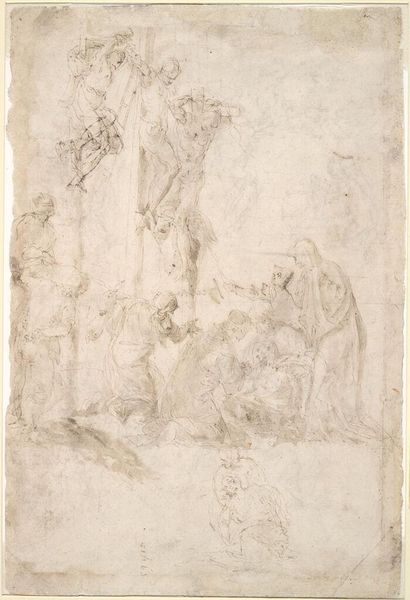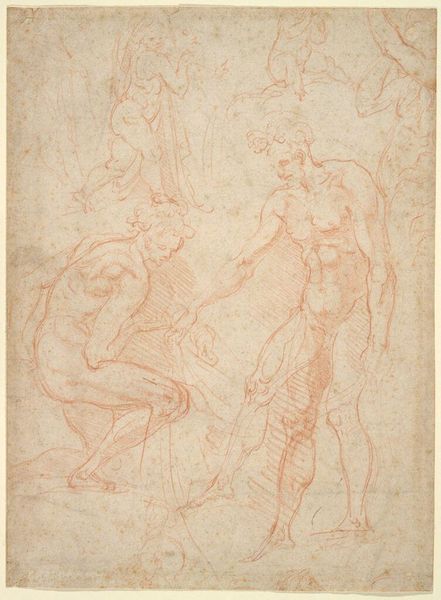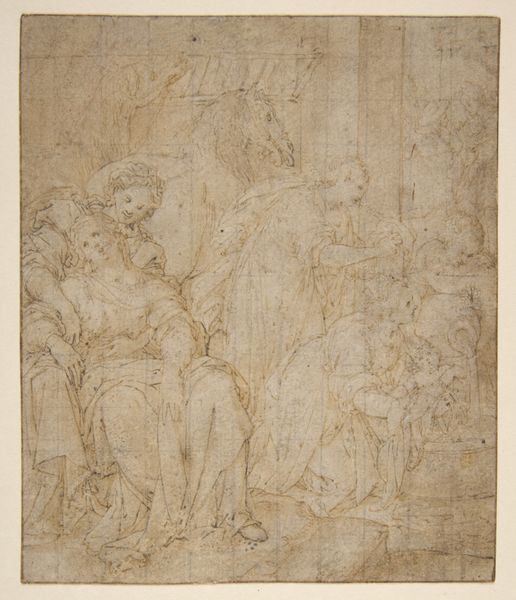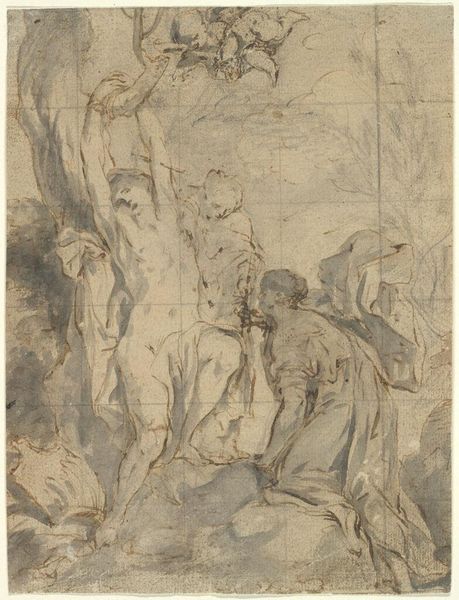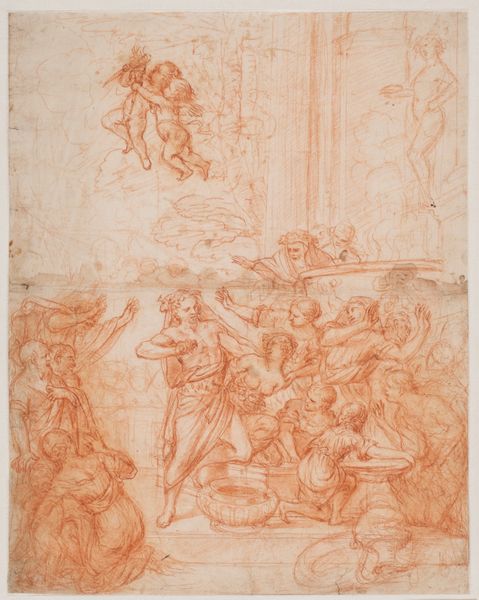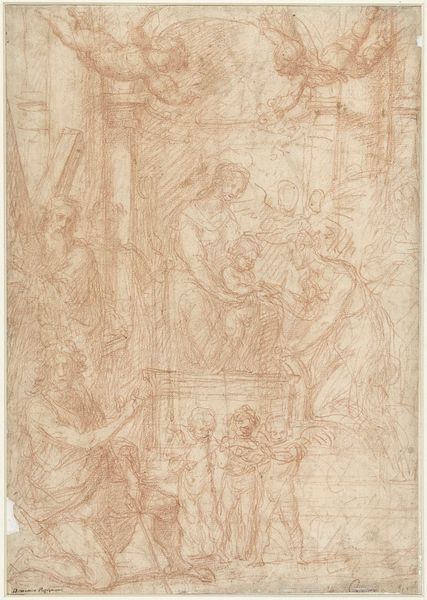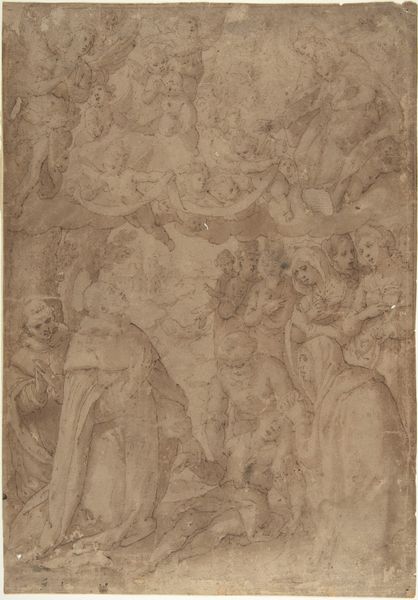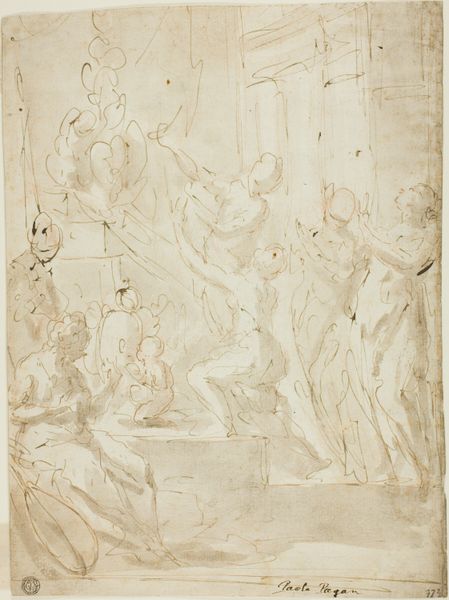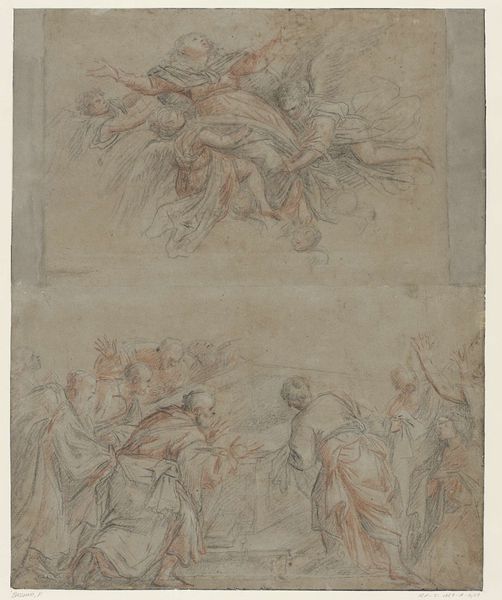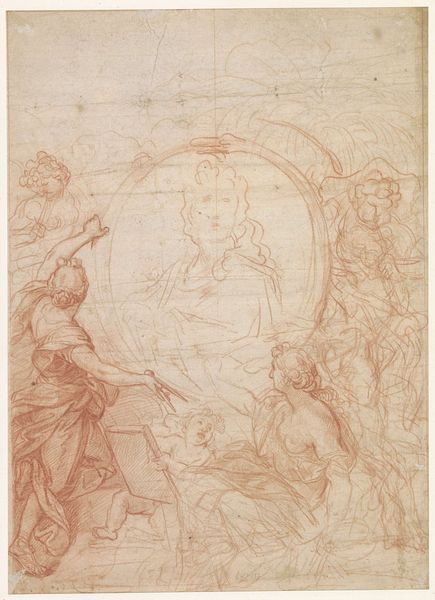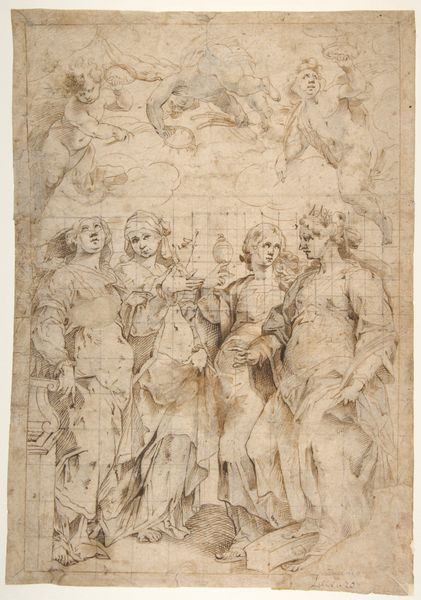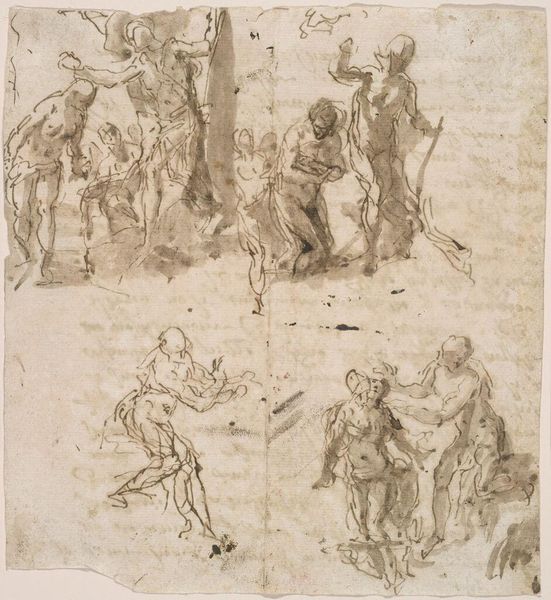
The Marriage of the Virgin, after Gaudenzio Ferrari c. 15th century
0:00
0:00
Dimensions: 30 Ã 21 cm (11 13/16 Ã 8 1/4 in.)
Copyright: CC0 1.0
Editor: Here's a pen and brown ink drawing, "The Marriage of the Virgin, after Gaudenzio Ferrari," by Enea Salmeggia. It looks like it's from the late 16th or early 17th century. What symbols stand out to you in this composition? Curator: The most potent symbols are the figures themselves. Their postures, drapery, and placement create an architecture of meaning, echoing established iconography. Notice how the Virgin's central position and delicate hand gesture speak volumes about purity and divine consent. Editor: So, the emotional weight is carried through these gestures? Curator: Precisely. The artist leverages cultural memory. Consider the cherubs above – a Renaissance reimagining of earlier celestial beings, signifying divine approval and blessing. These weren’t merely decorative; they were deeply resonant for the viewer, a bridge between the earthly and spiritual realms. Editor: That’s fascinating. I hadn’t considered how much pre-existing understanding was packed into each element.
Comments
No comments
Be the first to comment and join the conversation on the ultimate creative platform.
